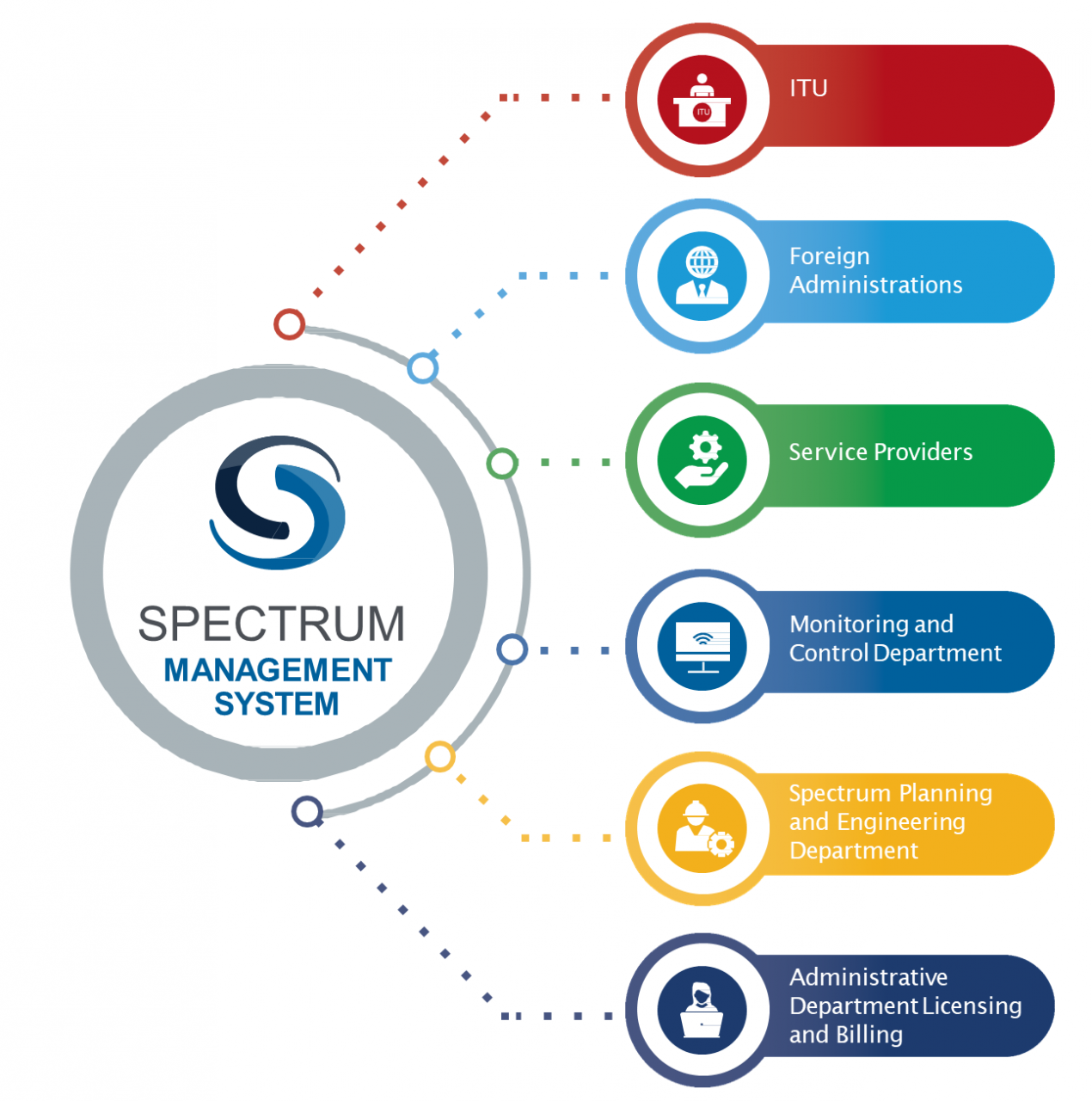Turn-key Spectrum Management Software
Spectrum Center offers spectrum management software which enables spectrum authorities to execute automated workflows for licensing, billing, frequency coordination (local, national, regional & international), interfacing with measurement devices, equipment type approval and more.
Their flagship spectrum management software solution is called Spectrum-E©. The Spectrum-E© platform uses a Windows, Apache, SQL, PHP (WASP) n-tiered web-application architecture. Through continuous innovation and by embracing the latest web technologies SpectrumE© easily adapts to the rapidly evolving web technology landscape. Spectrum Center brings to market a forward-thinking, cutting-edge, commercially viable software solution for spectrum management.
Click here for a PDF brochure that includes an overview on Spectrum Center and a summary of key features of Spectrum-E©.
Three modules
Since its inception, Spectrum-E© has grown to incorporate all the requirements of a spectrum regulatory authority across three independent modules:
E-Licensing – Allowing spectrum regulators and frequency coordinators to automate the processing of radio spectrum license requests
Technical Analysis – Enabling access to the COTS functionality of Spectrum-E for spectrum engineering
Remote Monitoring – Configured to work with external vendor’s spectrum monitoring products in a remote manner.
Each module can operate independently from each other and can be sold separately.
Software can be accessed via a cloud-subscription or local install. For remote spectrum monitoring, the customer provides Spectrum Center access to the servers that interconnect the spectrum monitoring devices.
high compatibility
As a web-based application, Spectrum-E offers a new level of cross-platform compatibility never previously available. The application can be accessed on a PC, tablet, and even smart phone.
Spectrum Center’s web application can be delivered as a subscription service (SaaS) utilizing Spectrum Center’s cloud services for computational processing, or through a local client-side implementation where the application can be integrated with other systems and legacy tools through scripting on the server-side and/or client-side interfaces.

